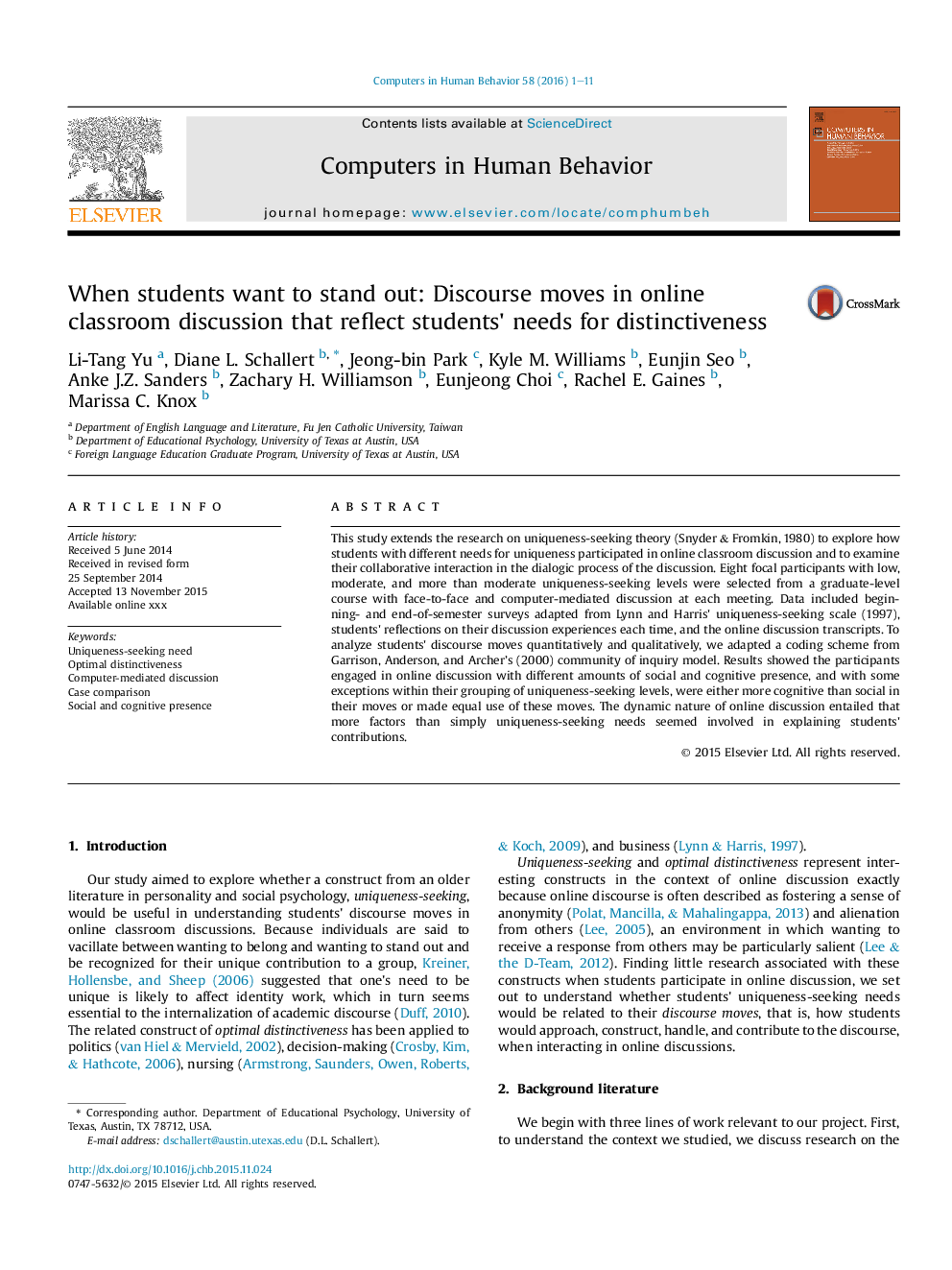| Article ID | Journal | Published Year | Pages | File Type |
|---|---|---|---|---|
| 6837513 | Computers in Human Behavior | 2016 | 11 Pages |
Abstract
This study extends the research on uniqueness-seeking theory (Snyder & Fromkin, 1980) to explore how students with different needs for uniqueness participated in online classroom discussion and to examine their collaborative interaction in the dialogic process of the discussion. Eight focal participants with low, moderate, and more than moderate uniqueness-seeking levels were selected from a graduate-level course with face-to-face and computer-mediated discussion at each meeting. Data included beginning- and end-of-semester surveys adapted from Lynn and Harris' uniqueness-seeking scale (1997), students' reflections on their discussion experiences each time, and the online discussion transcripts. To analyze students' discourse moves quantitatively and qualitatively, we adapted a coding scheme from Garrison, Anderson, and Archer's (2000) community of inquiry model. Results showed the participants engaged in online discussion with different amounts of social and cognitive presence, and with some exceptions within their grouping of uniqueness-seeking levels, were either more cognitive than social in their moves or made equal use of these moves. The dynamic nature of online discussion entailed that more factors than simply uniqueness-seeking needs seemed involved in explaining students' contributions.
Related Topics
Physical Sciences and Engineering
Computer Science
Computer Science Applications
Authors
Li-Tang Yu, Diane L. Schallert, Jeong-bin Park, Kyle M. Williams, Eunjin Seo, Anke J.Z. Sanders, Zachary H. Williamson, Eunjeong Choi, Rachel E. Gaines, Marissa C. Knox,
